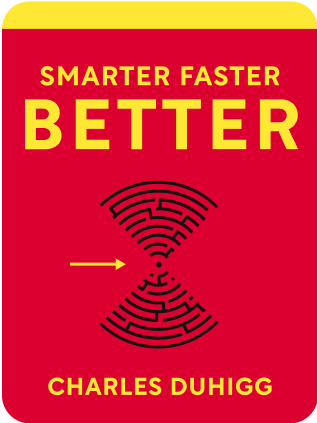

This article is an excerpt from the Shortform book guide to "Smarter Faster Better" by Charles Duhigg. Shortform has the world's best summaries and analyses of books you should be reading.
Like this article? Sign up for a free trial here .
How are your decision-making skills? Do you know what probabilistic thinking is—and how it can help you make better decisions?
An important element of productivity is the ability to make better decisions. At its root is the ability to predict the future with some accuracy. Probabilistic thinking is one way to do this.
Read more to learn how you can make better decisions using probabilistic thinking.
Make Better Decisions to Boost Productivity
To maximize your productivity, you must ensure that you’re making productive decisions; decisions that will move you further towards meeting your goals. Making bad decisions can lead to mistakes, wasted energy, and unproductive actions.
But how can you make sure that your decisions are productive? In short, making good, productive decisions is arguably all about being able to predict the future with some degree of accuracy. You need to be able to discern the consequences of your decisions, whether these consequences will be positive or negative, and whether they’ll help or hinder your productivity. Once you’ve got an idea of what the consequences of your decision will be, you can decide whether or not to proceed with it. If the likely consequences are positive, great! If not, it might be time to rethink your course of action.
Admittedly, accurately predicting the consequences of your decisions can be a difficult and imprecise art. Nobody can fully foresee what’s going to happen in the future, and nobody is going to get it right all of the time. However, to increase the accuracy of your predictions, you can engage in probabilistic thinking. This is a cognitive process that involves identifying all of the possible futures that your decision could lead to, and then calculating the probability of each possible future coming true.
Predict the Future With Probabilistic Thinking
Predicting the future is by no means easy. Nobody can do so accurately all of the time. However, there are ways for you to increase the accuracy of your predictions. For example, you can use probabilistic thinking. Studies have shown that this type of thinking can increase the accuracy of predictions by as much as 50%.
Probabilistic thinking is a cognitive approach that involves identifying all of the possible futures that a decision could lead to and calculating the odds of each future coming to pass. You can use this information to decide whether to proceed with the decision or not. It’s easy to see how this can help you make better decisions.
For example, imagine you’re trying to decide whether or not to propose marriage to your partner. There are two possible futures here: they say yes, or they say no. After considering all of the evidence—for instance, the strength of your relationship, your partner’s attitude towards marriage, and your overall compatibility—you come to the conclusion that it’s 75% likely that your partner will say yes, and 25% likely that they will say no. Based on these odds, you proceed with the proposal.
How Does Probabilistic Thinking Work?
Probabilistic thinking works on the assumption that the future isn’t one set path that’s definitely going to occur. Instead, it’s a series of possible outcomes, some of which are more likely to occur than others.
When thinking probabilistically, you must first thoroughly outline all of the possible futures that your choices could lead to, including futures that seem contradictory. Then, you need to accurately estimate the odds of each scenario coming to pass. To do this, you need to consider all of the different variables that could affect the odds of an outcome coming to pass, and decide on a probability accordingly.
Once you know the odds of each possible future occurring, you can decide whether to proceed with your decision or not. You know the relative odds of the decision having a positive or negative outcome, and can use this information to make better decisions.
Research has demonstrated that probabilistic thinking helps us to generate accurate predictions about the consequences of our decisions. A study conducted by psychologists from the University of Pennsylvania and the University of California-Berkeley found that training people to think probabilistically increased the accuracy of their predictions by as much as 50%. By basing your decisions on accurate predictions, you can vastly increase the chances that your choice works out well.
What Are the Benefits of Probabilistic Thinking?
Using probabilistic thinking can have a range of benefits. For one, it adds rigor to the decision-making process. It requires you to consider your decision and its possible consequences from numerous vantage points. It also forces you to be honest with yourself about the consequences of your choices, even if that involves confronting harsh truths—for instance, discovering that a decision that you desperately want to make has low odds of success and should probably be avoided.
Secondly, approaching decisions in a probabilistic way stops you from rushing into choices that are based solely on what you want in a given moment, and not on the actual benefits or risks of that decision. Ultimately, you’re able to make wiser choices.
Finally, probabilistic thinking forces you to consider all of the possible negative outcomes of your decision and their odds of occurring—an often distressing process that you may otherwise avoid. By making sure you identify these possible negative outcomes, you can prepare for them and, if possible, make better decisions that prevent them from coming to pass.
Example: Getting Lunch With Your Spouse
Midway through the working day, your spouse asks you out to lunch. This lunch could go one of two ways:
- Outcome #1: Go have lunch, have a lovely time, and come back feeling relaxed and happy.
- Outcome #2: Go have lunch, end up discussing stressful topics such as issues with childcare, and return to work feeling on edge.
Because you know that number two is a possibility, you can actively reduce the likelihood of it happening. If your spouse tries to bring up the childcare issues, you can ask them to wait until the evening to discuss the subject. You can steer the situation towards Outcome #1. By contemplating the possible negative outcomes ahead of time, you’ve helped yourself to make a wiser decision.
What Are the Limitations of Probabilistic Thinking?
No method of predicting the future is infallible, and probabilistic thinking is no exception to this. Ultimately, the whole process falls apart if we aren’t honest with ourselves about the odds of each possible outcome coming true.
When we really want a particular outcome to come true, we might be tempted to assign it very high odds of doing so—not based on the actual likelihood of it happening, but based on our emotions. We’re likely to ignore or downplay any signs that the odds are low and overestimate the significance of signs that the odds are high. We may then end up making a poor decision based on this inaccurate assessment of the odds. We’ve set ourselves up for potential disappointment or difficulties further down the line, when the consequences of our decision prove to be quite different from what we’d hoped.
To avoid this, it’s important that we estimate the odds of each outcome realistically. Doing so may feel hard or disappointing when the odds don’t end up reflecting our preferences. But it’s a necessary step if we want our probabilistic thinking to actually benefit us and lead us towards the wisest decision.
Even if you approach calculating odds with an honest mindset, it can still be a difficult process.
You may struggle to find the information you need to calculate accurate odds. Sometimes, there’s simply no way of knowing how a decision will pan out. In other cases, you may find some information that indicates the possible consequences of a choice, but not enough to be certain.
Regardless of its limitations, probabilistic thinking can be a tool that helps you make better decisions and increase productivity.

———End of Preview———
Like what you just read? Read the rest of the world's best book summary and analysis of Charles Duhigg's "Smarter Faster Better" at Shortform .
Here's what you'll find in our full Smarter Faster Better summary :
- Why becoming more productive isn’t about working longer hours or constantly pushing yourself to do more
- The 8 principles for improving productivity
- How to create a work culture in which each employee is truly valued






